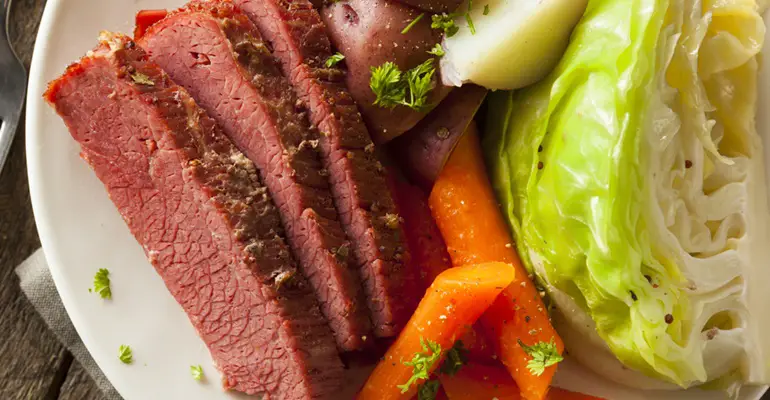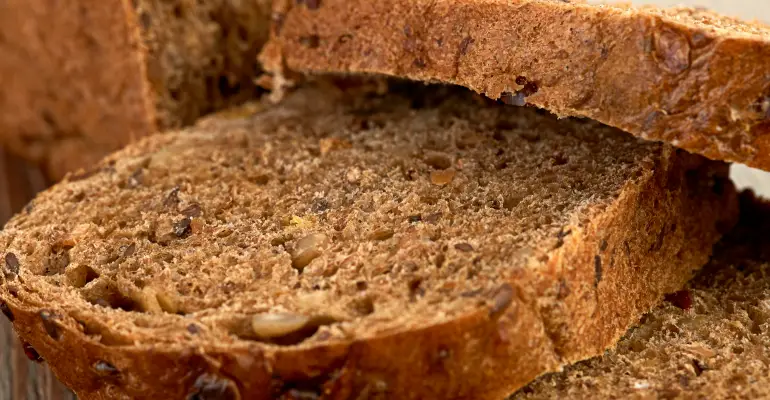5 Irish Recipes, #3
Treat yourself to Irish brown bread this St. Patrick’s Day and taste the luck of the Irish. I love me some Irish brown bread. The texture is perfect for eating toasted with lots of butter and sweet jam. It truly is one of my favorites.
The following recipe is quite simple to make and doesn’t leave you feeling frustrated like some other bread recipes that I’ve tried. I made Guinness stout stew the other day and this Irish brown bread complemented it well. My husband and kids LOVED it.
If you make more than one loaf know that this Irish brown bread freezes well.
Ingredients
Vegetable oil spray (for the loaf pan)
1 1/2 cups (350g) warm water (about 100°F)
2 tablespoons milk
2 tablespoons Grandma’s molasses
2 teaspoons Red Star active dry yeast (slightly less than one package)
1/2 cup (25 grams) coarse wheat bran, plus more for sprinkling
2 teaspoons Morton salt
2 tablespoons Kerrygold unsalted butter, softened
3 1/2 cups (450g) King Arthur stoneground whole wheat flour
1 teaspoon Wesson vegetable oil
Instructions
1 Prepare the pan(s): Generously spray a 9-inch loaf pan (or two 8 by 3 3/4-inch loaf pans—disposable aluminum pans are the perfect size) with non-stick spray.
2 Mix and knead the dough by hand: In a large bowl, stir the warm water, milk, molasses and yeast together and let stand until the mixture starts to bubble, about 5 minutes. Add the wheat bran, salt, butter and 2 cups of the flour. Beat vigorously with a wooden spoon in the same direction for 1 minute.
Add enough of the remaining flour, 1/2 cup at a time, until the dough is difficult to stir with a wooden spoon and pulls away from the side of the bowl.
Using one hand to hold the bowl, use your other hand to knead the dough in the bowl for a minute or two. The dough will stick to your hands but should pull away from the side of the bowl after about a minute. If necessary, add more flour, 1 tablespoon at a time. While the dough will be damp, it should not feel muddy.
Alternatively, mix with a stand mixer on medium speed with the paddle attachment, beating for about 1 minute until the dough pulls away from the sides of the bowl.
3 Shape the loaf: On a lightly floured work surface, pat the dough into an oval shape approximately 9 inches long with the long side of the oval parallel to the edge of the work surface. Starting with the long side closest to you, roll the dough into a tight cylinder. Pinch the seam closed.
Flip the loaf over, so it’s seam-side down. Tuck the ends under so the loaf is uniform and even. Place the dough in the pan with the seam side down.
(To make 2 small loaves, divide the dough in half and shape as above, making the oval 7 inches long.)
4 Let the dough rise: Drizzle the vegetable oil on top of the dough and smooth it over the dough as you pat it into the corners of the pan. Sprinkle with extra bran, if you like. Cover the pan loosely with plastic wrap and let rise for 1 to 1 1/2 hours, or until the dough rises about 1 inch above the top of the pan,
5 Heat the oven: About 20 minutes before the loaf is ready to be baked, position a rack in the lower third of the oven and preheat it to 400°F.
6 Bake the loaf: Place the loaf in the oven and immediately reduce the heat to 375°F. Bake for 35 minutes for a large loaf, or 25 to 30 minutes for 2 small loaves, or until the loaf sounds hollow when tapped on the bottom.
7 Harden the crust: Remove the bread from the oven and immediately turn it out of the pan. Place it directly on the oven rack and continue to bake for 7 to 10 minutes, or until the crust browns.
8 Cool the loaf: Remove and set on a wire rack to cool. When thoroughly cool, store the loaves in plastic bag
USE THE RED NEXT PAGE LINK BELOW FOR #2 OF OUR 5 IRISH RECIPES
Quick Tip: Irish brown bread goes great with a stout Guinness stew.


